Dogs are important members of the family. As such, they should eat vegetables like the rest of the family.
If you are looking for a way to make your dog’s diet healthier, one of the best tricks is to add more veggies.
Yes, dogs can do with some plant matter on their plates – vegetables and fruits included.
Veggies offer nutrients such as vitamins, fiber, and minerals that other sources of food cannot provide.
Plus, there are many options to choose from. Some can be eaten raw and others cooked.
Here, we list 6 ways of preparing vegetables for your dogs.
1. Boiling
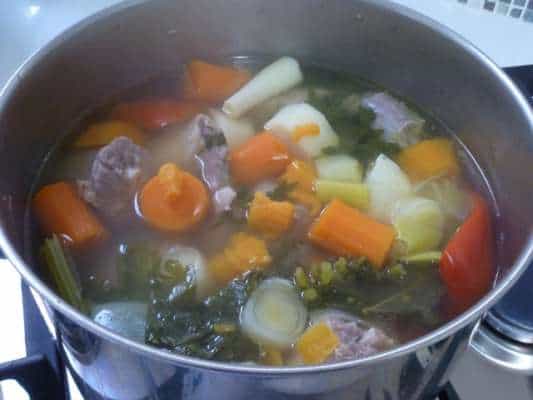
Dogs don’t have the right teeth to digest vegetables. As such, they do well with food that has been sort of broken down.
Boiling breaks down complex compounds present in veggies into simpler forms that are easily digestible. Because boiled food requires less stomach acid, it can help prevent acidity.
This method is the simplest method of preparing vegetables for your doggie.
During boiling, veggies are added to a pot of boiling water heated to about 2120F.
The method cooks down the food and kills microorganisms that would otherwise harm dogs.
On the flipside, boiling is a surefire way to get rid of nutrients.
The whole idea of adding vegetables to your dog’s diet is to draw the nutrients from it so it beats logic to kill them.
You can solve this issue by using the smallest amount of time to cook. Only simmer the veggies until they are crisp-tender then remove them from boiling water and strain them.
If you have stock sitting somewhere, you can use that to boil just to preserve the nutrients.
2. Blanching

Blanching is closely related to boiling. The only difference is that after boiling the vegetables in hot water, you will then proceed to submerge them in cold water.
You can plunge the vegetable in iced water or running water to stop the cooking process and preserve the nutrients.
Blanching stops the action of enzymes that would otherwise cause a loss of color, flavor, and texture in vegetables. It also eliminates dirt and microbes from the vegetable, brightens it, and slows down the loss of vitamins.
Chefs use blanching to wilt and soften some veggies for easy packing (especially asparagus and broccoli).
For your dogs, the biggest benefit of blanching is that you help them eat veggies that are easier to digest but which are packed with nutrients.
Examples of veggies that do well with blanching include broccoli, green beans, peas, and beets.
To blanch, simply boil your vegetables to the desired level of softness then remove them and run cold water or submerge them in a bowl with ice water.
For vegetables, boiling should take anywhere between 2 and 5 minutes.
To get the best results, maintain the right cooking time by making sure water is boiling throughout. This way, the color and flavor change is minimal.
3. Steaming
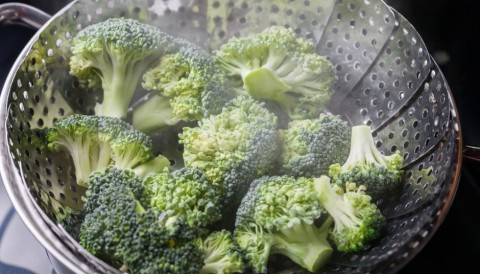
Steaming is also a great way of preparing your Fido’s vegetables.
Here, you place the veggies in a perforated container that sits on boiling water in pressurized conditions.
So essentially, the food is cooked by the steam rising from the boiling water and not the water itself as is the case with boiling. Since steam is hotter than liquid, it cooks the food faster than boiled water.
The best part about it is that it doesn’t dissolve nutrients in the food including phytochemicals, vitamins, and minerals.
Plus, it tenderizes vegetables enough so that your dog can digest them with ease thereby preventing diarrhea and flatulence.
Steaming is a good alternative to the over-processed treats available at your local pet store. Not only are these high in calories but they offer little nutritional value as well.
Most veggies including Brussels sprouts, spinach, green beans, carrots, squash, pumpkin, cabbage, broccoli, and cauliflower are ideal for steaming.
The easiest way to steam the veggies is to use a steamer.
Pour some water at the bottom, place the vegetables at the top compartment, and switch on the cooker.
Once the water comes to a boil, your vegetables will start to cook.
Once cooked, cool and serve them to your pup.
4. Pureeing
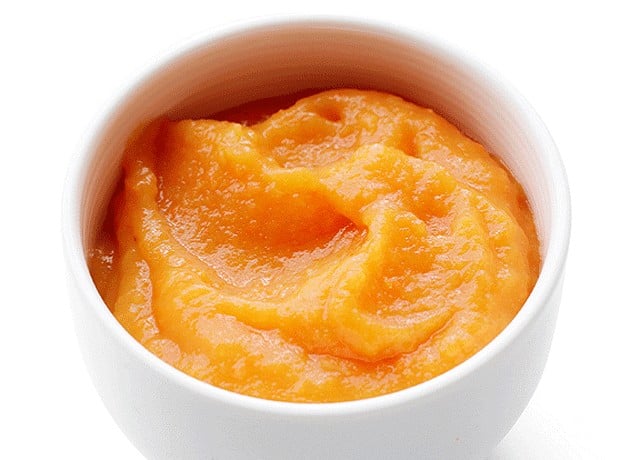
Boiling, blanching, and steaming are great ways of preparing vegetables for canines.
Unfortunately, some of these fellas don’t fancy the idea of chewing on plants. No matter how well you prepare the veggies, some will not touch their food.
This is where pureeing comes in. When you blend everything up, some will take interest.
This method also gives you a chance to feed your doggie raw vegetables. If you know a thing about eating raw vegetables, you probably already know that they are choke-full of nutrients compared to their cooked counterparts.
The problem is that you cannot give a whole zucchini to your doggie. Plant cells have a cellulose cell wall that dogs cannot digest. This is the reason why when you feed your doggie a whole carrot, it will come out the same way it went in.
Pureeing raw vegetables breaks the cellulose wall to make the nutrients available to your dog.
What you end up with mimics the contents of an animal their cousins in the wild just killed.
Also, this method makes it easy to add veggies into your dog’s diet if he’s not a fan of them.
Finally, with pureeing, you can create cubes and freeze them for use at a later date.
5. Baking
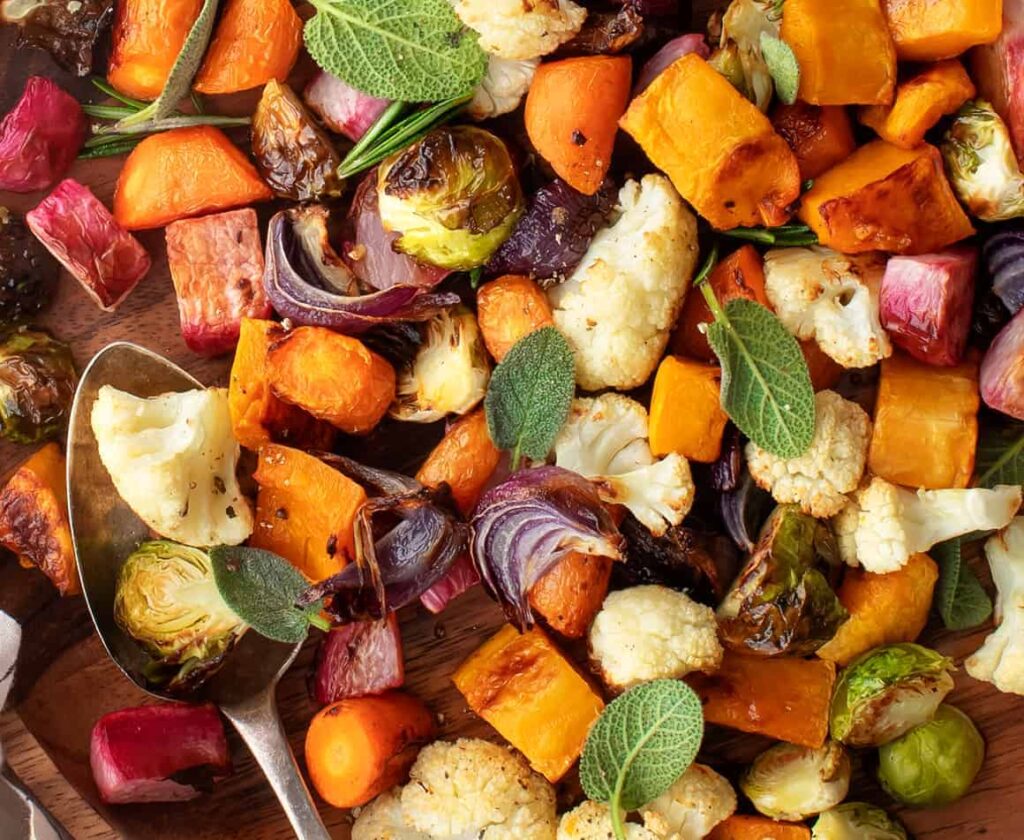
Baking is not only good for preparing human food but it is also good for making vegetables for your pooch.
Roasting vegetables at high temperatures protect against the loss of nutrients.
Sure, intense heat can alter the nutritional profile of some of the vegetables but it will also boost some.
A homemade sweet potato treat is best prepared by baking. Simply slice the sweet potato, line the pieces on your baking tray, and bake until crispy but tender. Your doggies will love it.
Roasting will dehydrate the vegetable making it a healthy tasty treat.
With baking, though, it is a hit-miss venture. Some vegetables do well with it while others don’t.
Oven temperature, and the time of baking matter when it comes to the nutrient content of the vegetable after preparation.
Generally, vegetables such as eggplant, broccoli, asparagus, artichokes, onions, and green beans preserve their antioxidants after baking while green peppers lose them.
6. Fermentation
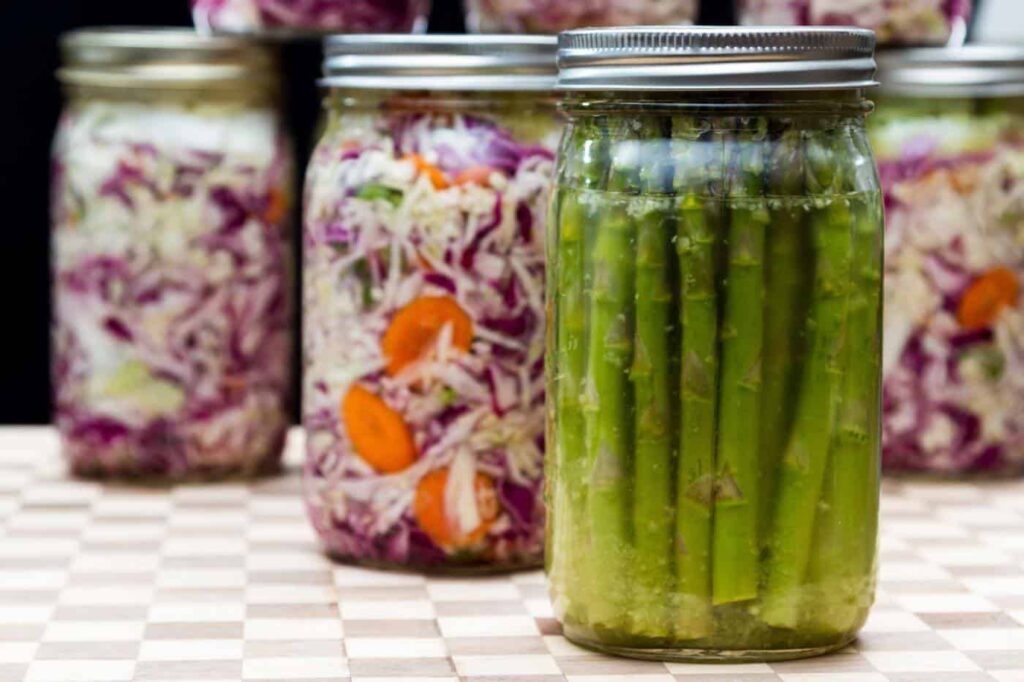
Last but not least, fermentation is another excellent method of vegetable preparation.
This one is superior to the previous methods as it introduces probiotics to the canine tract to help with gut health.
This, in turn, frees up your dog’s immune system thereby reducing inflammation and allergies.
Since the food is already fermented, it is much easier to digest and absorb.
To make fermented veggies, gather your favorite options and chop them up as fine as you can.
All the members of the cabbage family are ideal for this method.
Add some salt to the vegetables and massage them until they are wet.
The salt turns into brine which helps with fermenting.
Let the veggies sit for 20 minutes then massage again.
Repeat the same procedure a few more times then spoon the veggies into a jar and press them down to remove air pockets.
The last step is to seal the content and wait 20 days during winter and 10 days during summer.
Closing Thoughts
There it is—6 ways to prepare vegetables for dogs. There’s no excuse to giving your pup bad food—at least not when veggies are available and pretty easy to prepare.
Whatever you do, avoid adding salt or flavorings thinking your doggie needs them. Keep things natural—that’s how your fur baby likes it.
Related Posts:
As an Amazon Associate, we may receive a small commission from qualifying purchases but at no extra cost to you. Learn more. Amazon and the Amazon logo are trademarks of Amazon.com, Inc, or its affiliates.

